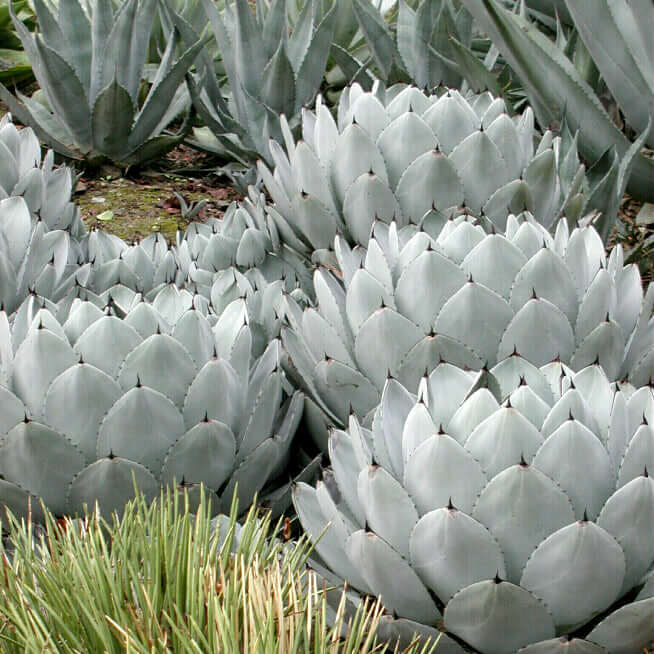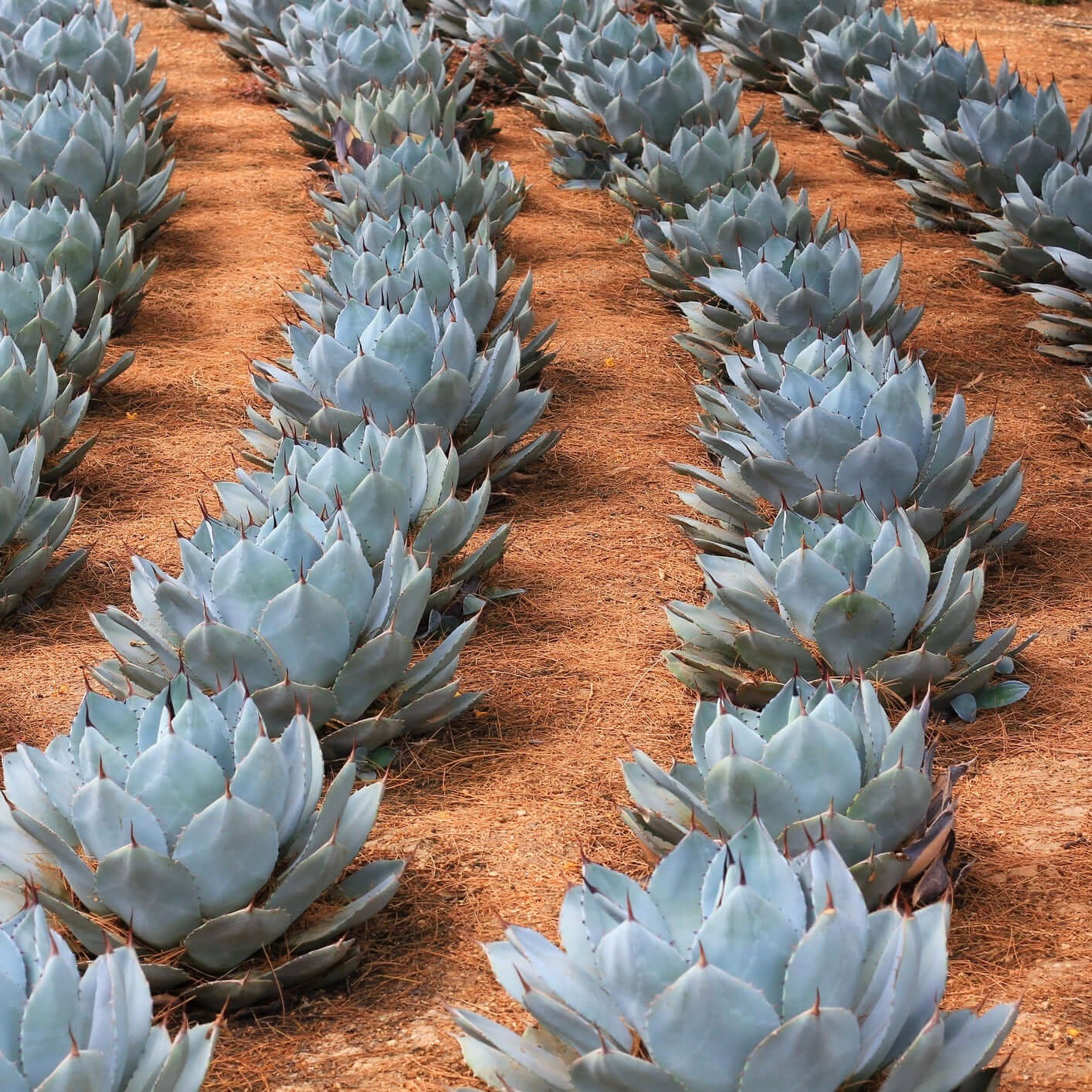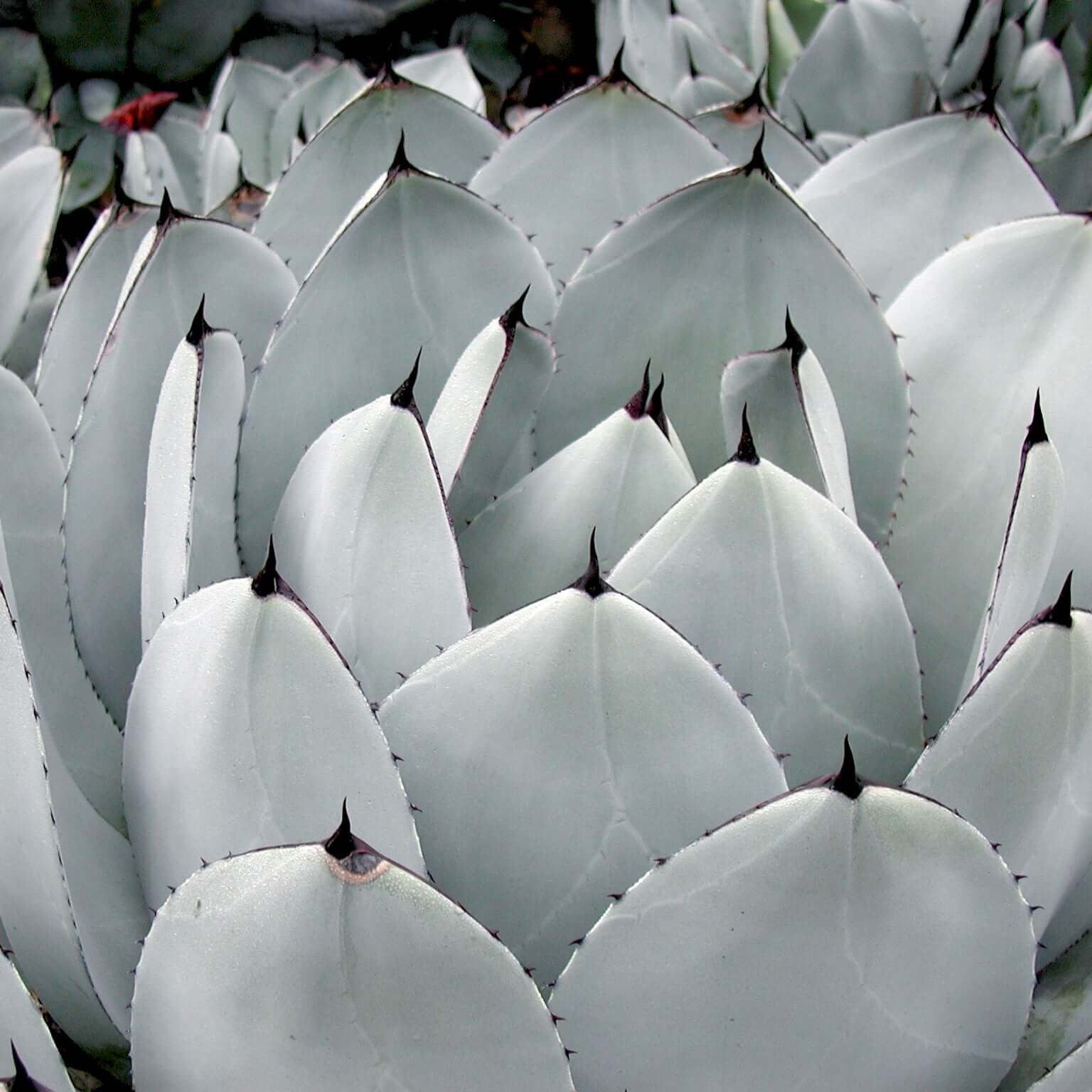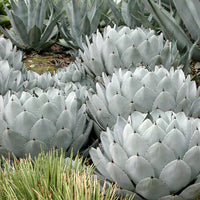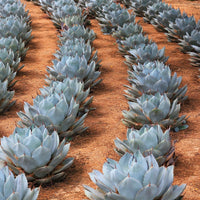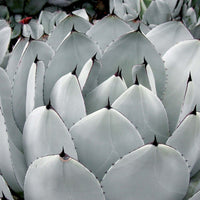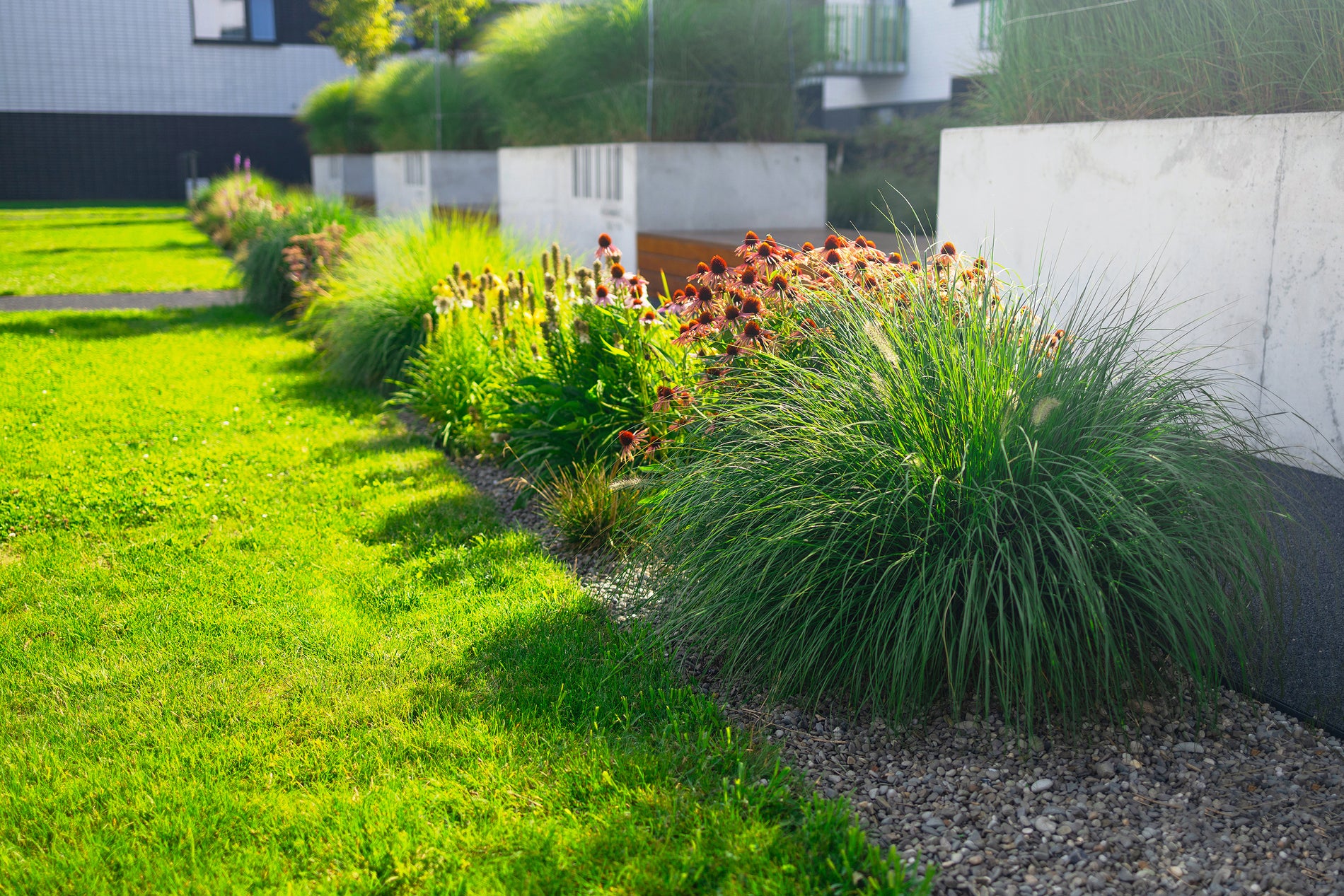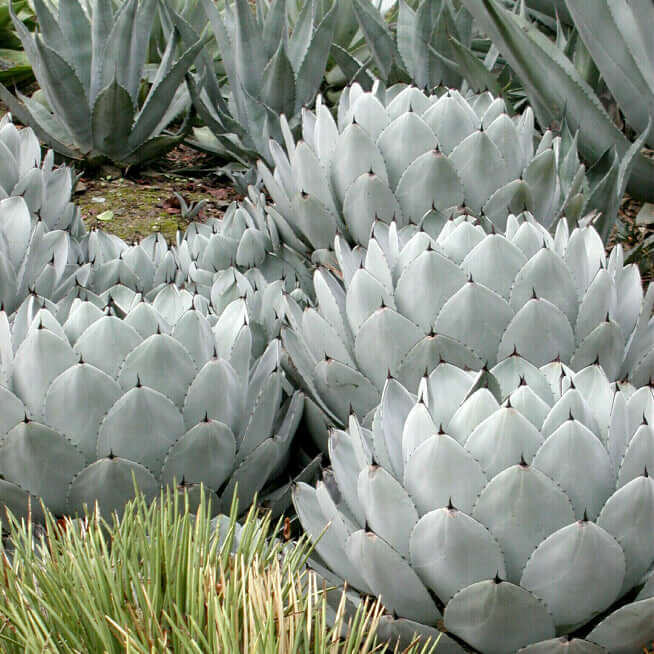
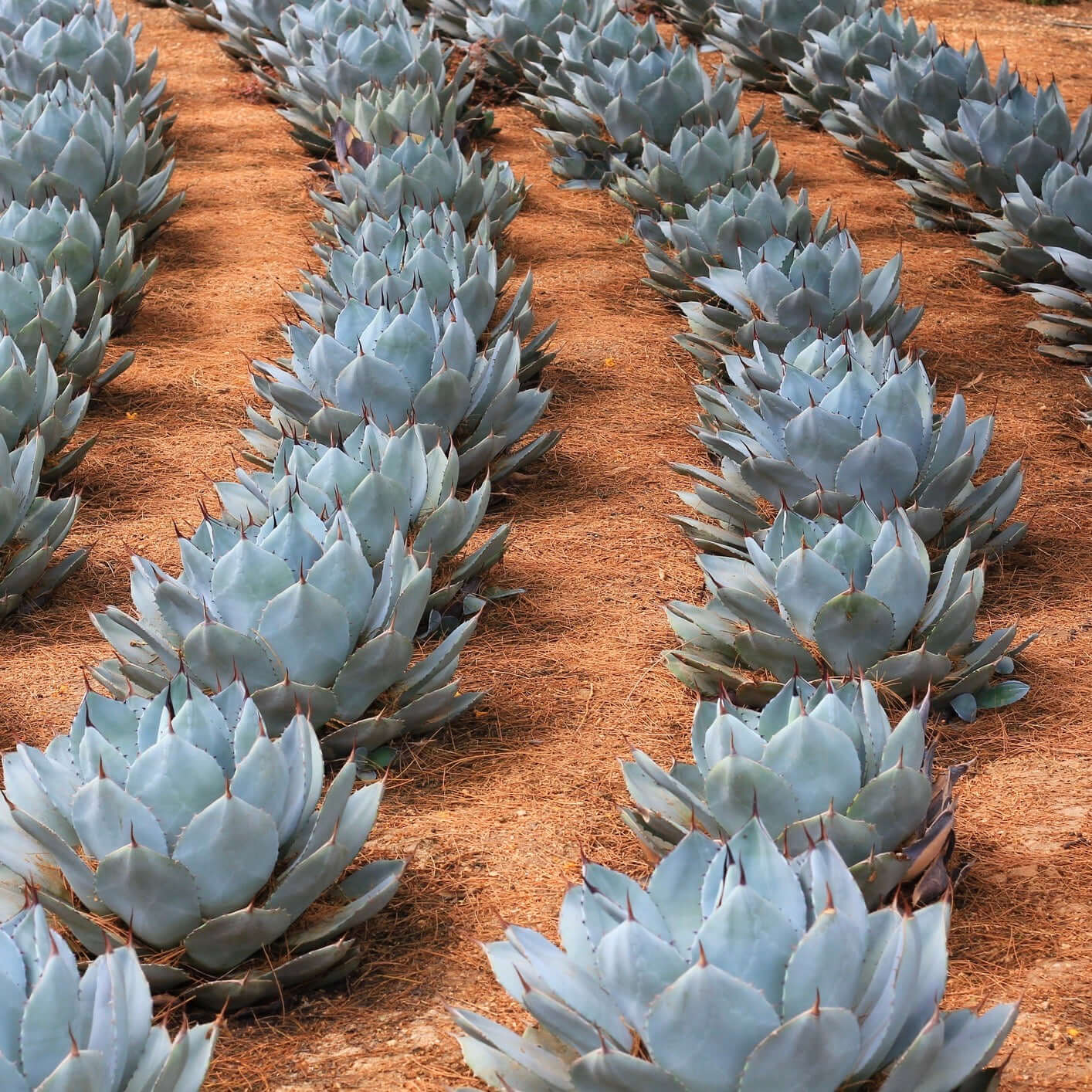
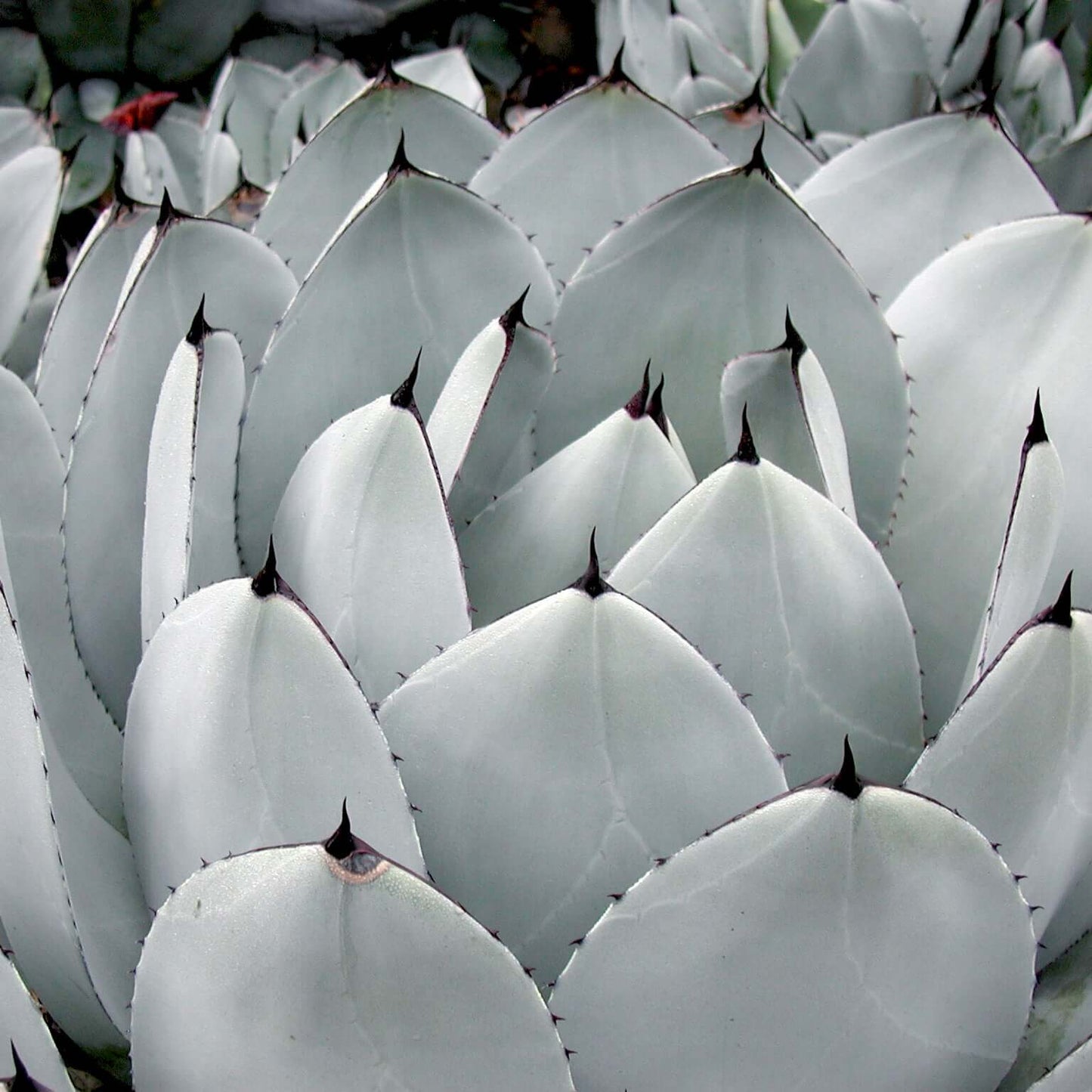
Extra 20% Off SITEWIDE
Copy the coupon and use it at checkout:
GARDEN20
Agave parryi var. truncata is extremely popular for its blue-grey foliage and compact form resembling an artichoke. This beautiful agave effortlessly captures the imagination with its architectural elegance and symmetrical structure. The enchanting Artichoke Agave provides the perfect balance of excitement and serenity in a garden.
This form of Agave parryi is a favorite with its compact, dense rosette and broader, rounder, shorter leaves. The bright glaucous blue-grey leaves are very wide with stubby or blunt edges and dark reddish-brown, curved teeth on the margins and a slightly wavy terminal spine. As the plants approach maturity, the upper leaves become more tapered. Slow growing, this handsome agave can be solitary becoming 2-3 ft. tall and 3-4 ft. wide eventually forming a colony with many offsets.
In the landscape, Agave parryi var. truncata is a distinguished focal point with its architectural symmetry. The cool blue hues compliment the golden spines of Echinocactus grusonii (Golden Barrel Cactus) or stand out against dark green foliage. Use in containers, or as an accent, grouping, or border in the garden. Artichoke Agave is suited to a variety of landscape styles including minimalist, mid-century modern, contemporary, succulent or rock gardens.
Easy to grow and drought tolerant, Agave parryi var. truncata is low maintenance and an ideal choice for gardens of all sizes. With its distinctive shape and dramatic foliage color, the Artichoke Agave adds beauty and structure to the landscape. Order today for delivery to your home.
How we Deliver Plants
By using our own fleet of vans and trucks, we're able to control quality and deliver right to your door.


